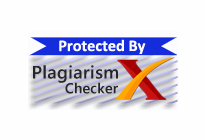ANALISIS STRATEGI PEMASARAN UNTUK MENINGKATKAN VOLUME PENJUALAN PADA CAFÉ HAAGENDAZS BEACHWALK KUTA
Abstract
The right marketing strategy will create opportunities for the company to get higher profits, which means it will increase the company's prosperity. For this reason, it is necessary to implement effective marketing strategies in developing companies. One of the developing companies in Bali is PT. Rahayu Arumdhani International, where they are the main distributor of Haagendazs ice cream products in Bali and manage Haagendazs cafes in Indonesia, one of which is Haagendazs café in Bali, namely Haagendazs Beachwalk Kuta. Café Haagendazs Beachwalk Kuta has a very high sales target, where this target will increase by 5% from reality every year, based on the company's historical sales data. The purpose of this study is to describe and analyze effective marketing strategies in increasing sales volume at the Haagendazs Beachwalk Kuta café which can be applied during the new normal from the Covid-19 pandemic using the SWOT analysis method. The results showed that Café Haagendazs Beachwalk Kuta is a company that implements a marketing strategy that differentiates the market (differentiated marketing) with the type of entrepreneur who segments the market, applies the 4P marketing mix concept to its daily marketing activities. The results also show that to increase the effective sales volume the company must use and implement an aggressive growth strategy, namely by developing and exploiting the strengths and opportunities (SO) owned by Café Haagendazs Beachwalk Kuta for business development.
Downloads
The use of the article will be governed by the Creative Commons Attribution license as currently displayed on Creative Commons Attribution 4.0 International License.
Author’s Warranties
The author warrants that the article is original, written by stated author(s), has not been published before, contains no unlawful statements, does not infringe the rights of others, is subject to copyright that is vested exclusively in the author and free of any third party rights, and that any necessary written permissions to quote from other sources have been obtained by the author(s).
User Rights
JSS's spirit is to disseminate articles published are as free as possible. Under the Creative Commons license, JSS permits users to copy, distribute, display, and perform the work. Users will also need to attribute authors and JSS on distributing works in the journal.
Rights of Authors
Authors retain all their rights to the published works, such as (but not limited to) the following rights;
- Copyright and other proprietary rights relating to the article, such as patent rights,
- The right to use the substance of the article in own future works, including lectures and books,
- The right to reproduce the article for own purposes,
- The right to self-archive the article,
- The right to enter into separate, additional contractual arrangements for distribution of the article's published version (e.g., post it to an institutional repository or publish it in a book), with an acknowledgment of its initial publication in this journal (Jurnal STIE SEMARANG).
Co-Authorship
If the article was jointly prepared by other authors, any authors submitting the manuscript warrants that he/she has been authorized by all co-authors to be agreed on this copyright and license notice (agreement) on their behalf, and agrees to inform his/her co-authors of the terms of this policy. JSS will not be held liable for anything that may arise due to the author(s) internal dispute. JSS will only communicate with the corresponding author.
Royalties
This agreement entitles the author to no royalties or other fees. To such extent as legally permissible, the author waives his or her right to collect royalties relative to the article in respect of any use of the article by JSS.
Miscellaneous
JSS will publish the article (or have it published) in the journal if the article’s editorial process is successfully completed. JSS's editors may modify the article to a style of punctuation, spelling, capitalization, referencing and usage that deems appropriate. The author acknowledges that the article may be published so that it will be publicly accessible and such access will be free of charge for the readers as mentioned in point 3.





.png)





